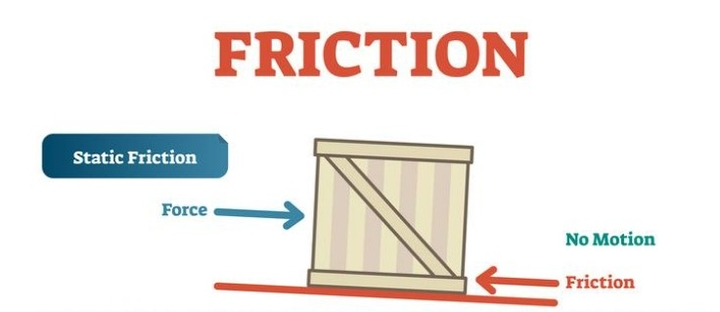What is Static Friction? Formula, Diagrams, and Examples
By BYJU'S Exam Prep
Updated on: September 25th, 2023

Static Friction is the type of friction that is induced when the body is in static condition. Friction is the tangential force acting on the surface of a body. It is the cause of the motion of a body. With the help of frictional force a rest can move, at that time frictional force acting on the body is called dynamic friction. The value of static friction is lesser than the value of dynamic friction.
Static Friction GATE Notes(PDF)
Static friction is the frictional force when the body is at rest conditions. The value of static friction is adjustable in nature. Static friction is zero when there is no force and it will gradually increase when it is supposed to be the external force. In this article, static friction, a topic of engineering mechanics will be discussed in detail.
Table of content
What is Static Friction?
Static friction is one type of friction acting on an object when it is in the rest condition. It is adjustable in nature and increases gradually as the external force increases on the object. It can be said that a body is in rest condition even after the application of force due to only static force. Static friction can also be explained that the force which balances the external force applied on a stationary object.
The static force of friction is self-regulating in nature, which means that the value of static force is always equal to the applied force and its direction will be opposite to the direction of the externally applied force. It can be calculated by applying the horizontal equilibrium condition on the body, mathematically, it can be expressed as the
μs × N.
Where,
- N is the normal force
- μs is the coefficient of static friction
What is Kinetic Friction?
Kinetic friction is also known as dynamic friction. It is one of the types of friction acting on an object when the body is in a moving condition. It is constant in nature and the value of dynamic friction will be lesser than the value of the static friction force. The dynamic frictional force is the cause of the motion in the body. The frictional force acting over the body when it is on the verge of motion is called the limiting frictional force. And when it comes into the motion then the value of existing frictional force reduces.
Hence, it can be stated that the limiting friction force is more than the dynamic frictional force. It can be seen in Friction clutches. The dynamic friction force is constant in nature, it does not vary with time. The frictional force will depend on the surface roughness, material properties, etc. Mathematically, It can be calculated as the μk × N.
Where,
- N is the normal force
- μk is the coefficient of kinetic friction
What is the Coefficient of Friction?
The coefficient of friction is a dimensionless number used to represent the relation between frictional force and the normal force acting over the surface of the body. The coefficient of friction can be classified into two types, named a coefficient of static friction and a coefficient of dynamic friction. These coefficients depend on the moving condition of the body whether the body is at rest or in a moving condition.
The coefficient of friction depends on the surface properties of the object like surface roughness, and intrusion coefficient and it also depends on the types of forces and their magnitudes. The coefficient of friction is the parameter used to determine the frictional force over a surface of an object.
Static Friction Examples
Friction is one of the important concepts of engineering mechanics, It is the parameter that is responsible for the motion of an object. So the frictional force is important to understand. It can be of two types whether it is static friction force or it will be kinetic friction force. Here a few examples of the static frictional force are given below, which helps to understand the concept of static friction.
- Paper on a table
- Parked car on the sloppy surface
- No relative motion between two surfaces

Calculation of Static Friction Force
As we discussed that friction is an important parameter of engineering mechanics whether it is static friction or kinetic friction. For the analysis of a static object, the free body diagram is very necessary. Based on the free-body diagram of the object, an analysis of all the forces can be made, and it would be possible if all the forces acting on the object is known. So, the calculation of the static force is also necessary to carry out further analysis.
The static force of the friction can be calculated as fs = μs × N, It will increase as the external load will increase on the object. The maximum value of static friction is also known as the limiting value of the frictional force. Then the motion will start in the body and at that time friction is known as the kinetic frictional force. It can be calculated as the fk = μk × N. The value of the kinetic friction force will be less than the value of the limiting frictional force.



